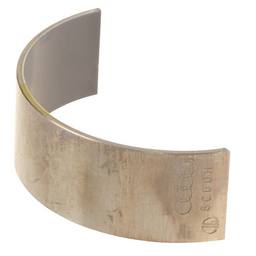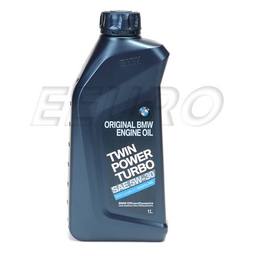Automotive engineering is deeply rooted in precision, at least as far as the engine goes. Most modern motors are mainly working with extremely tight tolerances, which partially allows them to be efficient and powerful. Now take that perception of modern engines and contrast it with connecting rods…cracked connecting rods. How did that happen?
Today we’ll expand on this subject and introduce you to a whole new automotive engineering world that isn’t flashy but effective. Here’s why your car has cracked connecting rods.
What Are Connecting Rods?
The whole idea behind an internal combustion engine is to harness the combusting fuel and turn that violent energy into movement. To achieve this, you have pistons moving through the four cycles of an internal combustion engine. During the combustion cycle, the pistons are pushed back down into the engine, spinning the crankshaft.
Connecting rods are there to provide a solid link between the crankshaft and the piston. Considering what they’re tasked with, it’s reasonable to assume that connecting rods must be made of strong material – something that can withstand the forces and stresses within the engine. And they are, in most cases.
If you were to pick a random car on the street and tear down its engine, chances are you’d find connecting rods made of powder metal. The material itself is durable and strong, however, the manufacturing process used to produce powder metal rods leaves them with cracked rod caps!

Why Is There a Crack in My Connecting Rod?
Manufacturing connecting rods is a process that has been nearly perfected by now. There are generally two types of rods you’ll run into out there – forged rods and cast rods.
Forged connecting rods are the bee’s knees when it comes to performance. Having a forged component usually makes it much more durable and resistant to wear. However, the forging process doesn’t lend itself well to mass production. It could, but that would be too expensive. After all, the budgetary spreadsheets made by people who have no engineering experience often trump what engineers actually want.
As a result, the entire industry had to leave forged connecting for the limited production performance models, and turn to an alternative method of manufacturing – casting!
Cast Connecting Rods
Casting is always easier from a mass production standpoint. All you need to do is make a sufficient number of casts to cover your demands, and you’re good to go. It’s a misconception that cast, or powder metal rods are weak or unreliable. This type of material is more than capable of withstanding the wear and tear of normal driving. Where cast connecting rods don’t work too well are high-performance engines where stresses and internal forces greatly surpass what cast rods can handle.
That being said, there is a small issue with cast rods – they are a monolithic piece of metal. As you can probably tell, mounting a monolithic rod to a crankshaft is impossible. That means that you have to create a cut in the rod eye to insert the bearing and mount the rod.
The Fracture
Creating this cut had proven to be much more complicated than it might seem. You can’t cut the rod because that would mean removing material from the rod eye. If you do that, the eye would no longer be a perfect circle and would be rendered useless.
To bypass this entire issue, manufacturers take the cast rod, place it under a machine that literally whacks the rod, creating a hairline fracture. If you were to take a close look at the fracture site, you’d find it to be irregular, jagged, and generally not something you’d expect to see in a finely engineered engine.
However, the method works, and it works well.
There are some precautions you must take when handling connecting rods. For example, you can’t mix and match different rods and rod caps since each pair is unique. As it turns out, it’s very easy to deteriorate the fractured surfaces, which in turn weakens the bite between the rod cap and the rod.
Because of that, you shouldn’t touch the fractured surfaces at all. You shouldn’t place them face down on a table, let alone machine them. If you do, no amount of work will reestablish that perfect seal.

Is the Fracture a Weak Spot on the Rod?
Upon learning about the fracture, many drivers are worried that it is a weak point in the engine and that it might cause the rod to fail. However, that isn’t the case. We won’t sit here and tell you that a rod has never failed along this line of separation, but that type of failure is extremely rare.
One of the reasons why the fracturing method was chosen in the first place is because it results in a strong connection. All those irregularities bite into each other when they’re connected, providing thousands of little anchor points. The fracture method results in a strong and, more importantly, well-balanced connection.
Why Do Connecting Rods Fail?
Have you ever heard some say that their engine ‘threw a piston‘? More often than not, that’s due to a failed connecting rod. Rods, although remarkably durable per design, aren’t impervious to damage. In fact, cast connecting rods have a limited fatigue life. Most will run just fine after a 200,000 miles or so, but that largely depends on how the car is driven, whether it was maintained properly, and so on. Here are some of the reasons why connecting rods fail.
- Piston Pin Failure – One of the most common reasons behind broken connecting rods is a failed piston pin. This is a component that connects the rod to the piston itself. When it decides to go, you’re faced with a bad situation that’s about to get worse!
- Piston Meets Valves – There’s are numerous reasons why your pistons could end up ‘shaking hands’ with your valve train. Over revving can be one of the culprits. Owners of cars with manual gearboxes have probably heard of ‘money shifting’, which translates to accidentally downshifting at high RPM. Once that happens and your engine violently over revs to a point where pistons hit the valve train, you could see a broken, bent, or warped rod.
- Hydro Locking the Engine – Cars are not boats, but people often forget that. As a result, they drive their vehicles through water that is deep enough to reach the intake, find its way into an engine, and hydro lock it. As soon as the water gets inside the combustion chamber, you’re risking bent or broken rods. Water doesn’t compress, but your rods might.
- Engine Tuning – Squeezing a few more horsepower from your engine often requires a bunch of mods. Once you change the performance profile of an engine, you’re essentially forcing all of its stock components to work outside their nominal parameters. If there’s one engine component that doesn’t appreciate that, it’s the connecting rod.
How to Prevent Connecting Rod Failure?
There aren’t many things you can do to prevent connecting rod problems aside from following a strict maintenance schedule. Change the engine oil in your car as instructed by the manual. Doing so will ensure that your rod bearings are always lubricated and ready to go.
Additionally, don’t push the engine too hard, too often. Rods don’t like tensile stresses, which are caused by high RPMs. If you maintain your car and drive it normally, you shouldn’t have any issues with your connecting rods.
When to Upgrade?
Upgrading the rods is a personal decision that may or may not bring you benefits. It depends on why you’re upgrading and what you intend to do with your engine. If you’re tearing down the engine and you’ve noticed that your rods are not in the best shape, by all means, consider aftermarket forged rods.
The same goes for when you want to tune the engine and get more power out of it. In that case, forged or high-performance rods are a must. There’s plenty of aftermarket options for most European cars out there.
How to Find the Right Connecting Rod for Your Car?
Finding the right parts for your vehicle can be tricky, but it doesn’t have to be. Head over to our online store and find everything you need using our simple navigation tool. All you have to do is input your car’s year, make, and model, and our system will show you all of the parts that match your query. In case you’re still not able to find what you’re looking for, check out our VIN tool.
If you’re still having questions about the connecting rods and other parts in our catalog, you can always reach out to us, and we’ll take care of you. Our customer support team is standing by to provide whatever assistance you need!








I’m a small engine mechanic, and I thoroughly enjoyed reading about connecting rods in your article. Thank you very much for that.